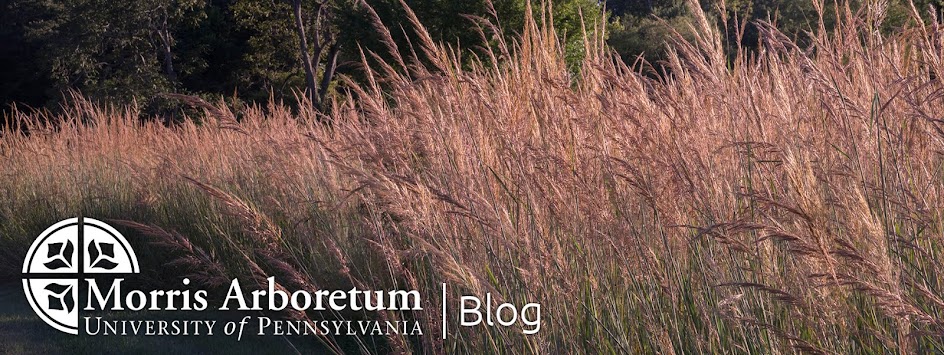 |
| The Arboretum’s beloved Katsura tree is renowned for its sweet, cotton candy-like aroma in summer. |
The Arboretum is a great place for both adults and children to learn about and interact with nature, and most importantly, see some unique and
beautiful trees. Kids are some of the Arboretum’s most energetic visitors. They have fun running through acres of open meadows or rolling down the hills. Some also like to climb the trees.
Climbing a tree is no doubt one of the great pastimes of childhood. Unfortunately though, not all trees are meant to be climbed, especially those at the Morris Arboretum. Most people don’t realize that the Arboretum is actually a
living museum, and each of its trees is part of a very valuable collection. Many of the Morris Arboretum’s trees are some of the oldest and rarest of their kind – some are even current or former state champions. Climbing these trees, as well as the others in the garden, can stress them or even break their limbs, and can damage their bark (which acts like the trees “skin”), leaving them vulnerable to pests and diseases.
Climbing these trees, as well as the others in the garden, can stress
them or even break their limbs, and can damage their bark (which acts
like the trees “skin”), leaving them vulnerable to pests and diseases.
There are many ways to enjoy the trees at the Morris Arboretum without climbing them. Trees provide us with plentiful shade from the hot summer sun. On your next visit, find a big tree, sit underneath, and really notice how the temperature changes under the shade of the tree. Observe the shapes and patterns of the leaves on different trees, and look for flowers on summer-blooming varieties. Stop and take in the scent of the trees. The Arboretum’s beloved
Katsura tree is renowned for its sweet, cotton candy-like aroma in summer. Take a few minutes to watch the
birds, squirrels and other animals that call the trees their home.
Trees give us so many gifts and ask for little in return – all they want is some water, sun, and a bit of love. So be a “tree hugger,” not a climber on your next visit. And make sure to find your favorite tree at the Arboretum and give it a hug!




















